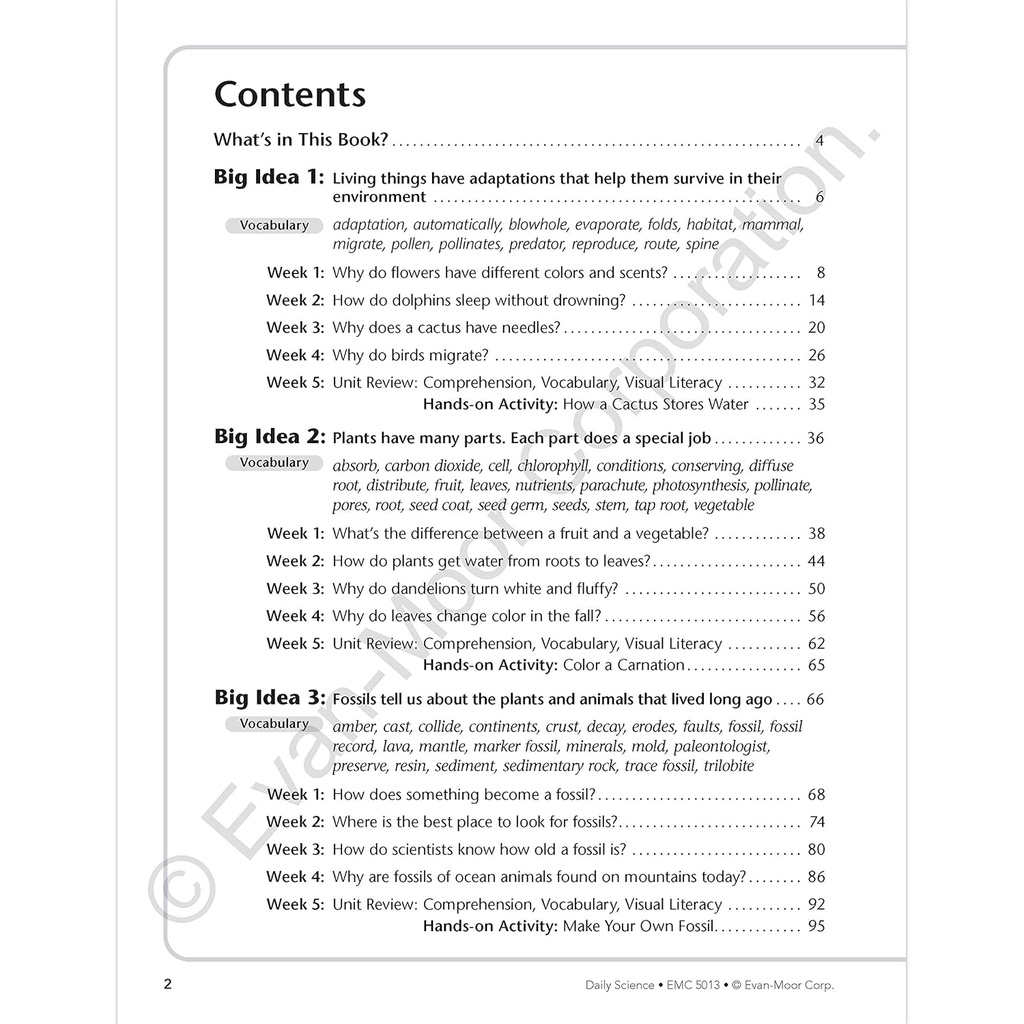Daily Science Grade 3
Help your grade 3 students develop a genuine understanding of standards-based scientific concepts and vocabulary using the 150 engaging activities in Daily Science! A variety of rich resources, including vocabulary practice, hands-on science activities, and comprehension tests in multiple-choice format, help you successfully introduce students to earth, life, and physical science concepts.
This third-grade teacher’s print edition contains 30 weeks of concentrated science lessons and hands-on activities that give students a solid foundation of standards-based science concepts while helping to improve science literacy. Students will learn and use relevant science vocabulary as they explore the answers to intriguing scientific questions like “why do leaves change color in fall” and “where does wind come from.” Daily Science is an excellent supplement to any third-grade science curriculum.
192 pages
30 weeks of instruction cover the following standards-based science topics:
Big Idea 1: Living things have adaptations that help them survive in their environment.
Week 1: Why do flowers have different colors and scents?
Week 2: How do dolphins sleep without drowning?
Week 3: Why does a cactus have needles?
Week 4: Why do birds migrate?
Week 5: Unit Review
Big Idea 2: Plants have many parts. Each part does a special job.
Week 1: What's the difference between a fruit and a vegetable?
Week 2: How does a tree get water from its roots to its leaves?
Week 3: Why do dandelions turn white and fluffy?
Week 4: Why do leaves change color in the fall?
Week 5: Unit Review
Big Idea 3: Fossils tell us about the plants and animals that lived long ago.
Week 1: Where is the best place to look for fossils?
Week 2: How do scientists know how old a fossil is?
Week 3: Why are fossils of ocean animals found on mountains today?
Week 4: How does something become a fossil?
Week 5: Unit Review
Big Idea 4: Air is a gas that surrounds us, takes up space, and creates weather.
Week 1: Why can't you breathe in outer space?
Week 2: Why does a can of soda sometimes explode when you open it?
Week 3: Where does wind come from?
Week 4: How do birds fly?
Week 5: Unit Review
Big Idea 5: Light moves in a straight line until it hits an object. Light can be absorbed, refracted, or reflected.
Week 1: Why does it get hot in the car on a sunny day when it is cold outside?
Week 2: Why does a straw look bent in a glass of water?
Week 3: Why do things look backward in a mirror?
Week 4: How does a movie projector work?
Week 5: Unit Review
Big Idea 6: Electricity travels in currents. It can pull and push the things around it.
Week 1: Where does lightning come from?
Week 2: Why do people get a shock when they touch metal?
Week 3: How does a battery make electricity?
Week 4: How does flipping a switch make a light bulb light up?
Week 5: Unit Review.





